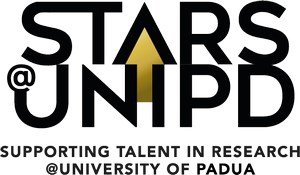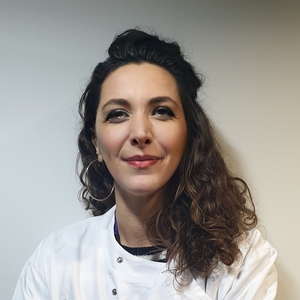
STARS Grantee: Anna Urciuolo
 Project: hARTm
Project: hARTm

Department: Women’s and Children’s Health
Total Contribution: Euro 180.000
Call: STARS-2017-StG
Project Duration in months: 24
Start Date: 01/05/2018
End Date: 30/04/2020
hARTm - Generation of a functional humanized artificial muscle by combining two-photon lithography, decellularized muscles and human iPSCs
The research project hARTm granted by STARS Starting Grant aimed at studying neuromuscular tissue and to develop regenerative medicine approaches aimed at promoting muscle regeneration in the body. The basic block of our studies is given by the growing knowledge that the 3D environment in which the cells reside have a tremendous impact on their activity and identity. Therefore, we combined a repertoire of emerging technologies to control the 3D environment and thus instruct the cells to act as much as possible as in the tissues that are present into our body.
With this project we were able to develop a new strategy of 3D bioprinting, that we named intravital 3D bioprinting, and that allow the generation of new muscle tissue within an alive animal model with a non invasive surgery approach. In particular, we used biomaterials that can turn from a liquid state to a solid state (hydrogels) when exposed to a specific light. This light is able to pass across tissues. Therefore, the bioprinting of hydrogels with a desired 3D shape can be performed directly in the muscle after a simple injection of the biomaterial and muscular stem cells (Urciuolo et al. Nat Biom Eng, 2020).
Despite such results, it is important to underly that the environment in which the cells are embedded in a tissue is really complex. The way in which the single components of this environment are interconnected to each other and their 3D organization represent a precise signal to the surrounded cells, which help them to work as they have to. Such complexity cannot be totally reproduced in the laboratory, but tissues can be harvested and treated to eliminate the original cells and to preserve only the native 3D environment.This process is called decellularization. Decellularized tissues represent a frontier in the field of regenerative medicine. Our studies support this hypothesis.
We demonstrated that decellularized muscles possess intrinsic properties to attract neural projections departing from those neurons responsible for the control of muscle contraction and therefore responsible for a correct function of the muscle (Raffa et al., Stem Cells Transl Med., 2020). Having a model of the human neuromuscular tissue in the laboratory would open enormous perspective for understand how neurons and muscle communicate, in both healthy and pathological conditions, and to develop new therapeutical strategies for patients affected by neuromuscular disease.


